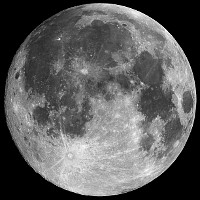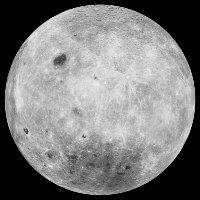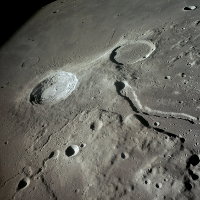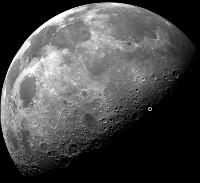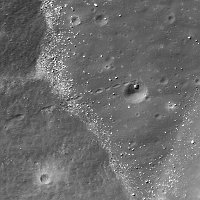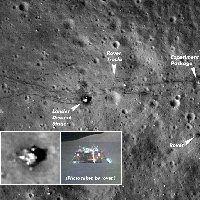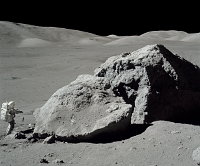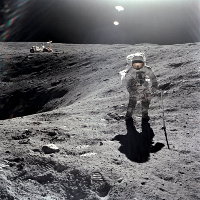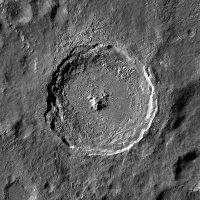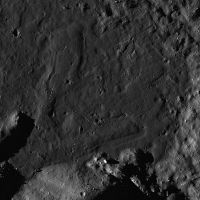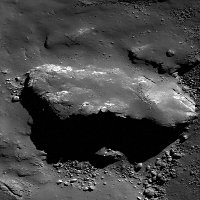Going to the Moon
In 1961, the United States had launched one person into space on a 15-minute flight, when NASA was told to get people to the moon. The technology didn't exist, and many people thought it never would. However, engineers invented everything they needed, and in only eight years, we saw astronauts bouncing through dusty plains in the low gravity! Most of what we know about the moon came from the manned missions even though there were only six. (If you don't think we really went to the moon, look here.)
Low Gravity
All objects in the solar system have gravity, but the less massive they are, the less gravity they have. The moon has only one sixth as much as the earth. That means you weigh six times less, and you fall six times more slowly! You could probably jump six times as high and throw something six times as far. Some of the astronauts who walked on the moon said that it was even more fun than floating in zero gravity.
Lava Flows
Most of the moon is completely covered with craters. They often overlap, and large ones are filled with small ones. However, some parts of the moon are smooth. Long ago, lava burst through the surface and spread out, burying the craters in the area. The lava is darker than the surrounding terrain, and astronomers long ago thought it was water, so the lava flows are called maria [MAR-ee-uh], which is Latin for "seas". (The singular form is mare [MAR-ay].)
Through a Telescope
The full size version of the full moon picture shows the moon magnified about 250 times. You can't often get a better a view than that. The full moon isn't a good time to view the moon though, because details are washed out. You get much better detail along the "terminator", which is the line between dark and light. Look at the north pole image to see a good example of a terminator. The Apollo landing sites are not visible through any telescope on Earth because you would need hundreds of thousands of times magnification, which is not possible. Even the Hubble Space Telescope can't go that high. We do have pictures though, because there is a spacecraft at the moon with a telescope on it. Through that telescope, we have gotten pictures of all the manned landing sites, and most of the unmanned landers as well.

